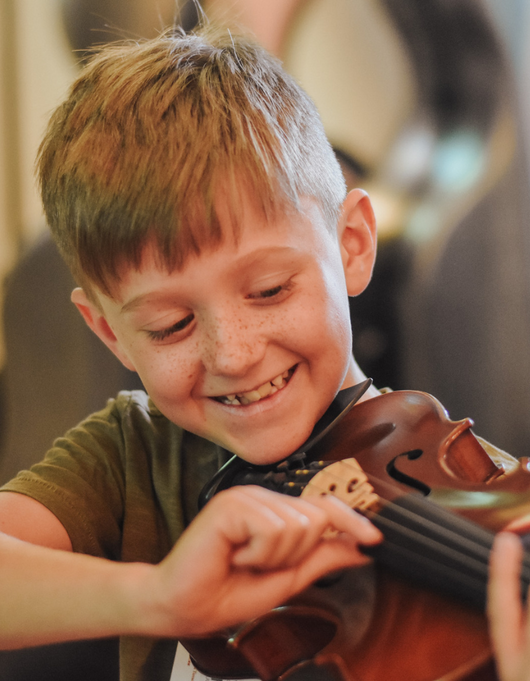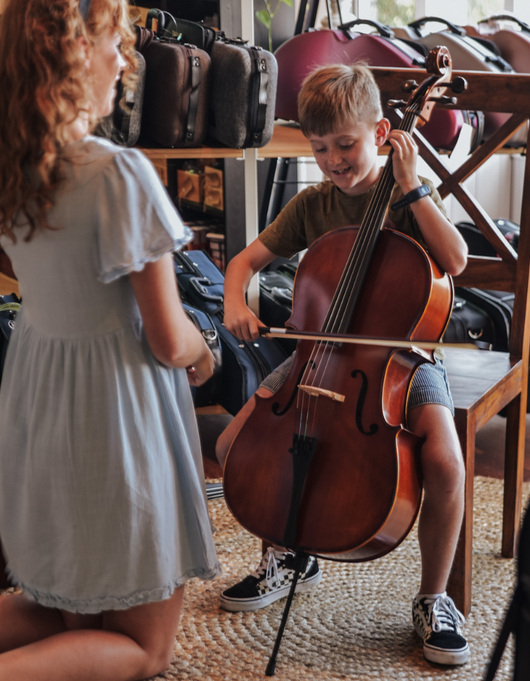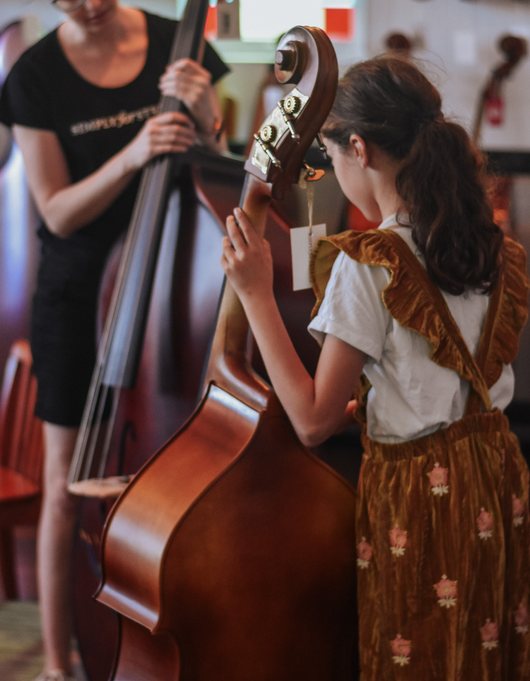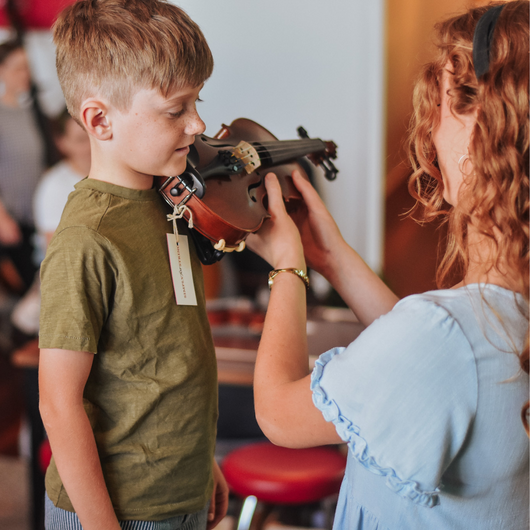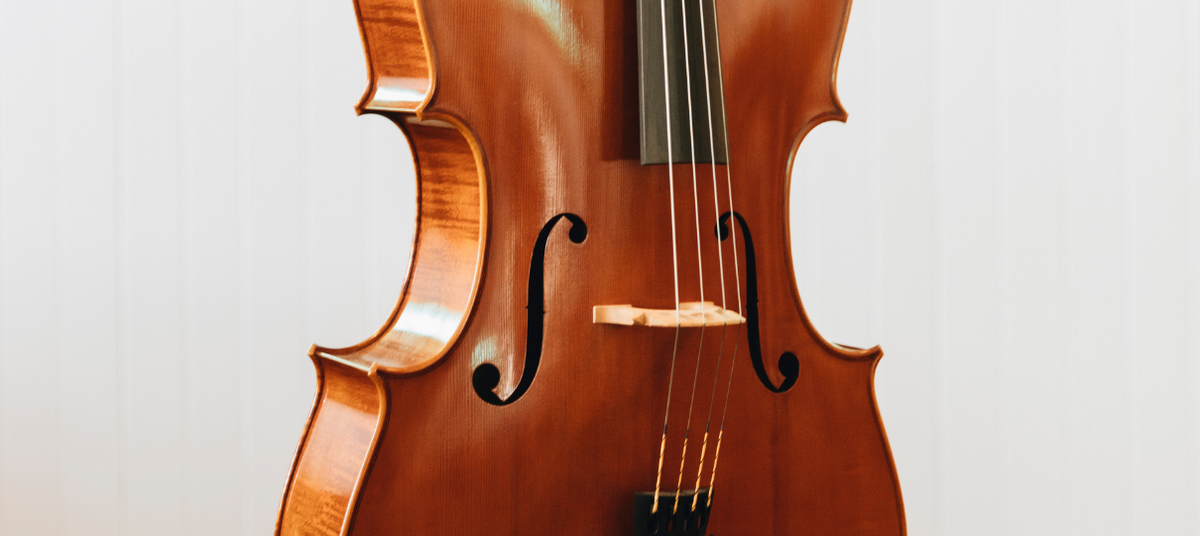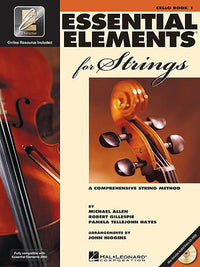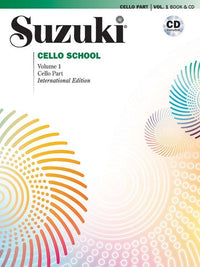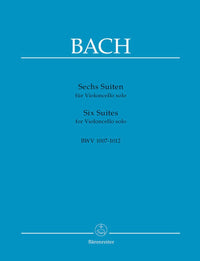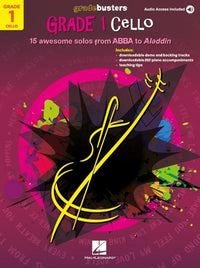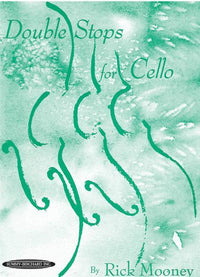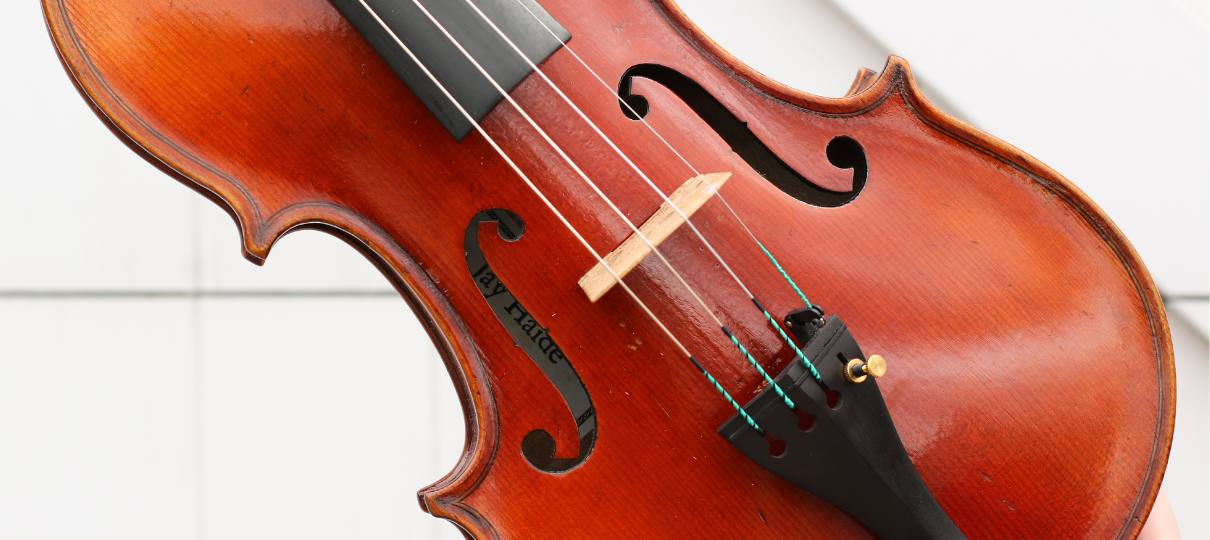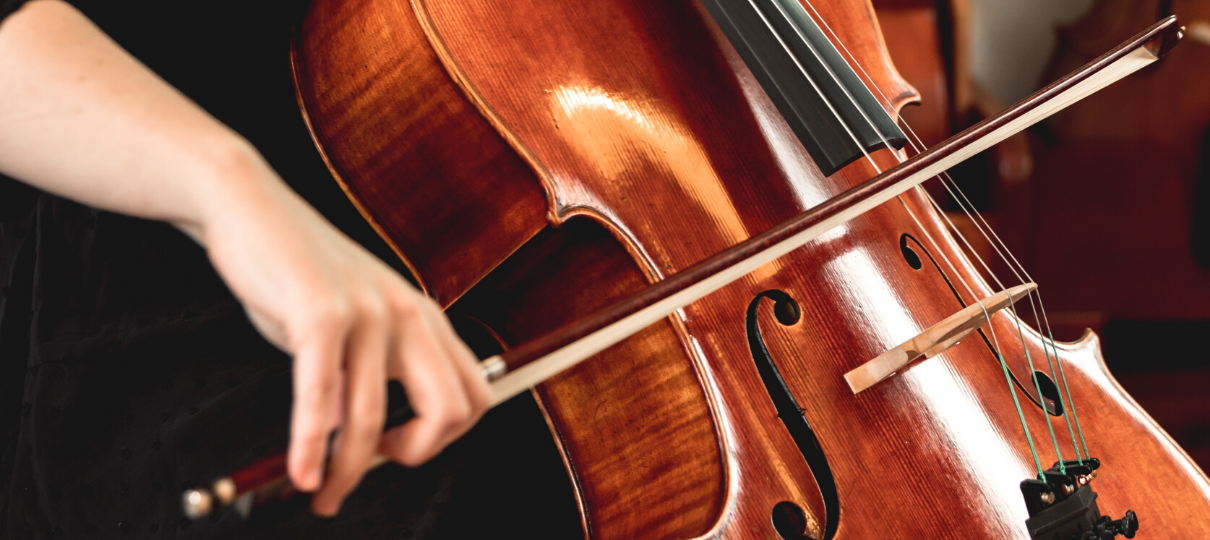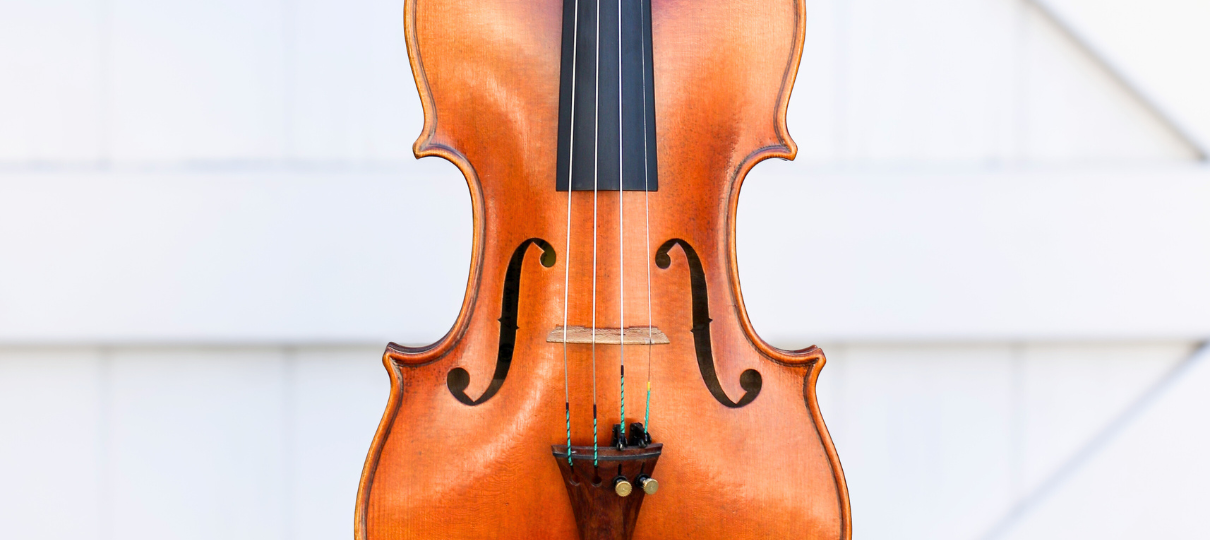Congratulations on starting to learn the cello! Here’s a quick list of some of our top recommendations of easy to learn songs for beginners. This list has been put together by professional player and educator, Michael Scott-Branagan. They are listed in the order Michael would teach for progressive reasons. All pieces have been selected for their educational value, and can be found in some of our best-selling beginner method books. The final piece will be your first foray into actual cello repertoire.
1. French Folk Song (Suzuki Vol 1; Essential Elements Book 1)
This old French melody is found in many beginner books because it partly uses a descending scale which is easy to understand, and is usually arranged in D major so it’s on the D and A strings. This is a great first piece, if you haven’t already learnt it.
2. Camptown Races, by Foster (A New Tune A Day Performance Pieces for Cello)
Stephen Foster (1826-1864) is famously known as the “father of American music”. He wrote many songs for travelling minstrel groups and parlor musicians and many of his songs are embedded in American musical history, including such titles as Oh Susanna, Old Folks at Home and others.
Camptown Races was a very popular minstrel song, and word has it that the good people of Camptown were so upset about being associated with the debauchery of this song that they voted changed the town’s name to Irvington in honour of the writer Washington Irving (Rip Van Winkle, The Legend of Sleepy Hollow). Foster wrote all types of songs with great success, from bawdy drinking songs to temperance songs opposing alcohol, to some wonderful hymns that are still included in many hymnals. This arrangement is well-adapted for the beginner cellist, using the A, D and G strings in 1st position.
3. Rigadoon, by Purcell (Suzuki Vol 1)
Henry Purcell (1659-1695) was an important composer in the English Baroque period. His Rigadoon is a classic, historical piece of early music that is worth learning. The rigaudon was a very popular French two-step dance that developed as a folk dance for couples, possibly in Provence in the 16th century and was found in the French and English royal courts. It is one of the dance types that were precursors to the classical minuet. The catchy arrangement in Suzuki Volume 1 is a good challenge for beginners and only uses A and D strings in 1st position.
4. Long Long Ago, by Bayly (Double Stops)
English poet, songwriter and dramatist Thomas Haynes Bayly (1797-1839) wrote this delightful song in 1833. It has been used by such great names as Glenn Miller, Louis Armstrong, Marty Robbins, Nat King Cole, Dean Martin and Bing Crosby. A very simple tune, quite catchy and easy to learn.
This arrangement has been chosen for its value in teaching the preliminary-level cellist basic double stopping, which is an essential string playing technique. Double stopping helps with correct hand shape training, and learning to play on more than one string at once is a vital skill. If it helps to learn this piece, you could try playing a simpler arrangement without double-stopping in Suzuki Volume 1, and then with a good simple variation to further stretch your playing in Suzuki Volume 2.
5. Hallelujah, by Cohen (Gradebusters Grade 1 Cello)
Leonard Cohen (1934-2016) was a well-respected Canadian author, poet, songwriter and singer. Hallelujah is regarded as his most famous song, but he wrote many others. This arrangement is designed for preliminary level cellists and sounds lovely.
6. Simple Gifts, by Joseph Brackett (Essential Elements Book 1)
Written in 1848 by Joseph Brackett (1797-1882) , this is a dancing song from a religious group referred to as the “Shakers”, a breakaway from the Quaker movement. The words are as follows:
“Tis the gift to be simple, ’tis the gift to be free
’Tis the gift to come down where we ought to be,
And when we find ourselves in the place just right,
’Twill be in the valley of love and delight.
When true simplicity is gained,
To bow and to bend we shan’t be ashamed,
To turn, turn will be our delight,
Till by turning, turning we come ’round right.”
The song was basically unknown outside the Shaker movement until it was popularised first by Aaron Copeland (1944 ballet Appalachian Spring), later adapted into a very popular hymn “Lord of the Dance” by Sydney Carter in 1963, and then by Ronan Hardiman in Michael Flatley’s Irish dancing phenomenon “Lord of the Dance” (1996). This cello arrangement is a great challenge for elementary cellists and situated near the back of Essential Elements Book 1, it’s a worthy reward for hard-working beginners.
7. Minuet No 2, by J.S. Bach (Suzuki Vol 1; Essential Elements Book 1)
J.S.Bach (1685-1750) was a German composer of secular and sacred music in the Baroque era. He was one of the greatest composers in history. This is one of Bach’s many popular minuets and will stretch your reading because it is quite a lively piece, jumping around over three strings. It isn’t a cello original but is worth learning and is very widely known.
8. Polovtsian Dances, by Borodin (A New Tune A Day Performance Pieces for Cello)
Alexander Borodin (1833-1887) was a Russian composer of the Romantic period. I’ve included this piece because it’s one of my many favourite melodies, and I wanted to share its beauty with you.
9. Can Can, by Offenbach (Vamoosh Book 3)
Jacques Offenbach (1819-1880) was a German-French cellist and composer, mainly of operettas in the Romantic period. Much of his operatic work included satire of the regime, a bit like Gilbert and Sullivan in England. The Can Can is one of his most famous melodies, and you can really enjoy its liveliness. If you want practice before trying the fuller version in Vamoosh Book 3, try the simpler arrangements in your favourite Book 1 of most tutor book series (including Essential Elements).
10. Greensleeves (A New Tune A Day Performance Pieces for Cello)
Greensleeves hardly needs an introduction. It’s an old English folksong, first mentioned in 1580 as a “song from the North”, and referred to by Shakespeare in The Merry Wives of Windsor. You’ve probably heard it coming from an ice cream van in Britain or Australia! I chose this song partly because I wanted to include a good old English folk song, and partly because it is in 6/8 time and good training in your development.
11. Minuet No 1, by J.S.Bach (Suite No 1 for Unaccompanied Cello)
Bach’s famous 6 Suites for Unaccompanied Cello are a very important part of the cellist’s repertoire and are used by teachers to develop your technique along the way. I have often played through the suites as essential background music at weddings and other functions.
This particular minuet is possibly the easiest piece from the collection and is a great way to dip your toes into the wonderful world of Bach’s cello music. The next piece to learn might be Bourree No 1 from the 3rd Suite, but you will need to wait a little while until you’re ready for that one.
It can be played in 1st position, apart from one E on the A string. You will need to know how to play C# on the G string and D# on the D string.

Looking for more?
Where can you look for music that will suit your level? We have listed some popular books that have suitable music. Depending on how you’re progressing (or how soon it is after starting the cello!) you may need to look at the front half of each book or if you’re progressing a little further you could go straight to the second half of each book.
Essential Elements Cello Book 1 (Online accompaniment using Smartmusic)
- At the back of Essential Elements Book 1 there are some “First performance pieces”, including:
- No 86 Beethoven “Ode To Joy”
- No 92 Offenbach “Can Can”
- No 192 Simple Gifts (old Shaker melody)
- No 193 Bach Minuet No. 2
Suzuki Cello School Volume 1 (CD available with the book)
- The Suzuki Cello School books are an excellent source for well-known classical music, graduated according to playing levels. Volume 1 is a great place to start, and you’ll find some enjoyable pieces to play that are just right for a beginner through to Grade 1 standard.
- French Folk Song (3/4 time, A & D strings, a great first song to learn)
- Suzuki “Perpetual Motion” (a great tongue twister for your fingers)
- No 13 Purcell “Rigadoon”
- No 15 Schumann “The Happy Farmer”
- No 17 Bach Minuet No. 2 (same piece as in Essential Elements)
Vamoosh Cello Book 3 (CD accompaniment)
- Vamoosh Cello Book 3 has plenty of well-known tunes arranged for preliminary-level players
- No 9 Handel “Sarabande”
- No 12 Offenbach “Can Can” (fuller version than EE)
- No 13 My Bonnie Lies Over The Ocean
- No 16 Franck “Panis Angelicus”
A New Tune A Day Performance Pieces for Cello
- Foster “Camptown Races”
- Sullivan “Poor Little Buttercup” from HMS Pinafore (3/4 time)
- Coventry Carol (16th Century English) (3/4 time and two flats)
- No 27 Bach “Minuet” (3/4 time, good use of lower strings, simple accidentals)
- Greensleeves (6/8 time, one flat and accidentals including C# on G string)
- Borodin “Polovtsian Dance” (4/4, full page, first position, no accidentals)
Mooney, Double Stops for Cello
- This book is a useful resource with many well-known folk tunes. It’s a good book to use because it also helps develop your left hand and your bowing technique. Double stopping forces you to play more carefully!
- Good ones to start you off include:
- Long Long Ago
- Three Blind Mice
- Amazing Grace
- Camptown Races
- If you’re feeling more adventurous, try:
- Auld Lang Syne
- Home On The Range
- Yankee Doodle (needs you to know 2nd position)
Gradebusters Grade 1 Cello (online audio accompaniment)
- Hallelujah (Leonard Cohen)
- Memory (from Cats)
- Ain’t No Sunshine (Bill Withers)
- A Sky Full of Stars (Coldplay)
- A Whole New World (Aladdin)
- And several other good fun pieces.
If you’re progressing really well and want a challenge with some use of the neck positions (plenty of ½ position and 2nd position, mostly exam grades 2 and 3 in standard), try:
Suzuki Cello School Volume 2 (with CD)
- No 4: Bach Minuet No 3 (uses 2nd position)
- No 6: von Weber “Hunters’ Chorus” (uses 2nd pos)
- No 9: Paganini, theme from “Witches’ Dance” (a favourite with my students)
- No 10: Schumann “The Two Grenadiers” (lots of fun and another big favourite)
- No 11: Gossec “Gavotte” (just beautiful)
- No 12: Handel “Bourree” (a wonderful classic)
- Suite No 1, Minuet No 1 is the best piece to start with. (has extensions but can be played almost entirely in first position, except for one E on the A string.

Reading sheet music
What do I need to be able to do, and what must I know before attempting to play a full new piece of music? To read cello music, you will need a basic understanding of the staff, notes, note values, key signature and time signature, so you can read music at your level. Here are some quick pointers.
Reading the clef
Looking at the piece of music you want to learn, you need to know how to play all the notes that are in it. Elementary cello music is written in the bass clef. As you progress you will also learn to read in the tenor clef and eventually the treble clef.
To be able to play your first complete pieces you’ll need to know the notes on the bass clef and match them to the correct fingers on each string, from the open C string up to D (4th finger) on the A string. This is what we call First Position. There are seven positions you will eventually learn, and then we add the thumb as a playing finger. This is called Thumb Position, and is used over most of the fingerboard, but this comes a lot later in your development.
It helps to know the difference in the notes between 2nd and 3rd fingers on each string, also to know the most basic extensions (Bb on A string, Eb on D string, C# on G string, and F# on C string. It will also help keep in tune if you know your 4th finger on each string can pitch-check with the next open string down. Eg: 4th finger on A string is D, and can check against the open D next to it; 4th on D string is a G; 4th on G is a C. Just remember they are an octave apart, but it will help to check that your hand is in the right position.
Understanding time & key signature
Simply put, the time signature is a notational convention used in Western musical notation to specify how many beats are contained in each measure, and which note value is equivalent to a beat. Do you know how to read and count if the music is in 4/4, ¾, 2/4, 6/8 time? If you’re unsure how to count out your first pieces, we suggest picking pieces in time signatures that are simple, 4/4 and ¾.
Do you know the most common key signatures? They are C major / A minor (no sharps or flats in the key signature), G major / E minor (F# key signature), D major / B minor (F3 & C#), F major / D minor (Bb). Pick pieces that have key signatures with notes that you know how to read and play.
Understanding note values
Have you learnt the main note values? Crotchet (quarter note), quaver (eighth note), minim (half note), semibreve (whole note), semiquaver (sixteenth note). Does the music have note values you don’t yet understand? Have you worked out how to play with dotted notes? Pick pieces with note values you can understand. Of course, if you have a recording with the book, you might be able to work some of these out just by listening carefully.
There are some great theory books available to help you understand some of these key musical foundation blocks.
AMEB Theory of Music Grade 1 is a great option for beginners, even if you don’t intend to complete any AMEB exams. The Grade 1 book covers note values, note naming, scales, time signatures, intervals and several other key concepts.
The How to Blitz books are another popular option and is written with an assumption that the reader has never seen music before. It contains revision and worksheets to make learning key theory concepts a breeze.
Get in touch with our friendly team today via 1300 739 293 or live chat.



